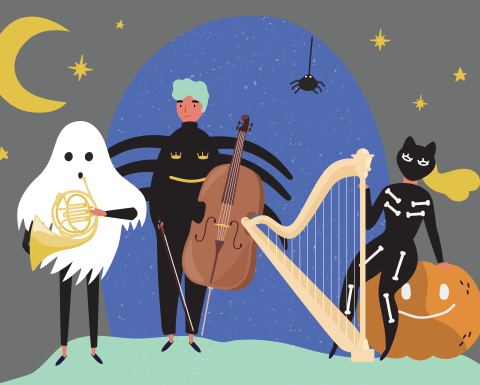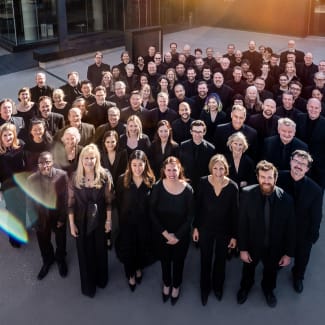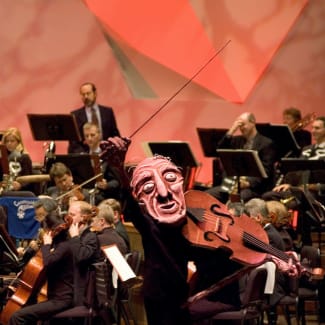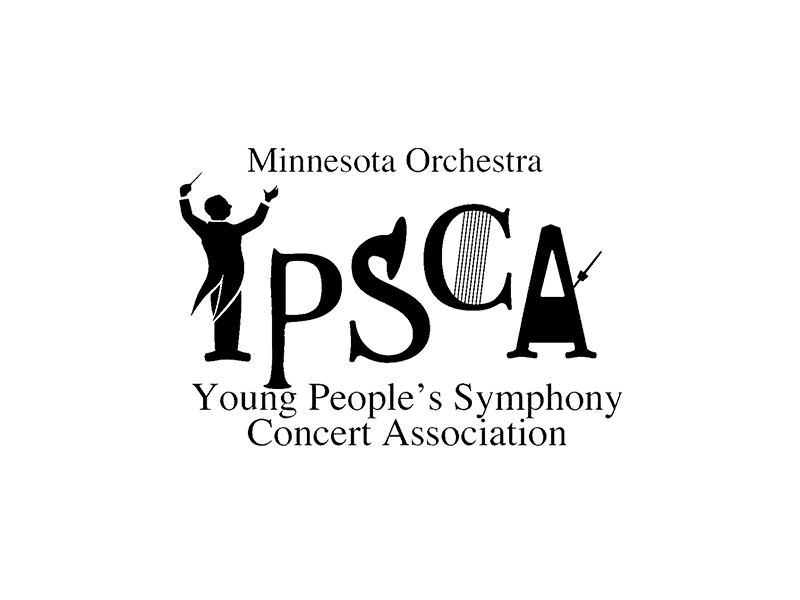
CONCERT ACTIVITIES
Symphonic Chills and Thrills
Discover how composers make music sound mysterious or chilling. (Grades: 1-6)
Hosted by beloved Twin Cities artist and frequent Minnesota Orchestra collaborator Christina Baldwin.
About the Composers
Edvard Grieg
Edvard Grieg is the most famous Norwegian composer of classical music, and his compositions are strongly influenced by Norwegian folk music. In 1874 the Norwegian playwright Henrik Ibsen asked Grieg to compose music for a dramatic production of his poem Peer Gynt. Grieg was at first unenthusiastic because he didn’t like Peer, the main character, but he took on the task and worked at it for two years, eventually writing 23 separate musical numbers. This music has become popular for its memorable melodies and for some very exciting, and spooktacular, moments.
Ibsen’s poem, in rhymed verse, tells of the adventures of the irresponsible man named Peer Gynt, who travels through the world and seems to learn nothing from his fabulous experiences. Eventually shipwrecked, this aged and empty man returns home and is finally redeemed by the love of Solveig, who has remained faithful to him through his long absence. Today you will hear In the Hall of the Mountain King, which is the climactic ending to the first section of Peer Gynt. Peer is in the mountains, visiting the trolls and elves, and the troll king’s daughter falls in love with him; when he rejects her, the trolls erupt. This famous music, which repeats one musical theme and lets it grow to a great climax, depicts their throwing Peer out.
- Born: June 15, 1843, Bergen, Norway
- Died: September 4, 1907, Bergen
Instrumentation: 2 flutes, piccolo, 2 oboes, 2 clarinets, 2 bassoons, 4 horns, 2 trumpets, 3 trombones, tuba, timpani, bass drum, cymbals and strings
Adapted from a program note by Eric Bromberger.
Camille Saint-Saëns
Raised in the Latin Quarter of Paris by an obsessive mother and a doting aunt, by age three the young Camille Saint-Saëns was playing the piano. At ten he made his public recital debut, offering as an encore any one of the 32 Beethoven piano sonatas—played entirely from memory! He also excelled in mathematics and the natural sciences, especially astronomy. He became a successful composer and had a long career staying true to his own musical style as classical music changed drastically. Although Saint-Saëns was an excellent pianist, he composed music for many solo instruments as well as full orchestra. He turned often to the expressive qualities of the solo violin, and the violin is featured prominently in Danse macabre (Dance of Death). Danse macabre was first composed as a song, the words telling the story of a skeleton playing a lively dance tune on the violin at midnight. Saint-Saëns expanded it two years later for orchestra, giving much of the vocal part to solo violin, and using xylophone to depict the rattling skeleton bones.
- Born: October 9, 1835, Paris, France
- Died: December 16, 1921, Algiers, Algeria
Instrumentation: piccolo, 2 flutes, 2 oboes, 2 clarinets, 2 bassoons, 4 horns, 2 trumpets, 3 trombones, tuba, timpani, percussion (bass drum, cymbals, triangle, xylophone), harp, and strings
Adapted from a program note by Mary Ann Feldman.
William Grant Still
William Grant Still’s achievements in classical music were impressive and groundbreaking: he was the first African American to have a symphony performed by the New York Philharmonic, the first to conduct the Los Angeles Philharmonic, and the first to have an opera staged by a major opera company, the New York City Opera, to name just a few landmarks. The son of a bandmaster and a high school English teacher, he began his musical career working as an arranger for W.C. Handy and Artie Shaw. Following his naval service during World War I, he made his home in Harlem, where he took part in the African American Harlem Renaissance artistic and cultural movement. By the time of his death in 1978, he had composed nearly 200 works, including five symphonies.
Many of Still’s works deal expressly with African American history, identity and musical traditions. He wrote over 150 compositions, including operas, ballets, symphonies, chamber works, and arrangements of folk themes and spirituals, plus instrumental, choral and solo vocal works. Phantom Chapel was originally written for solo piano and later arranged for orchestra as the first movement of a two-part work titled Bells. The composer described Phantom Chapel as depicting “the tolling of ghostly bells…interspersed with the chanting of unseen priests, until the illusory chapel dissolved in a swirling mist.”
- Born: May 11, 1895, Woodville, Mississippi
- Died: December 3, 1978, Los Angeles, California
Instrumentation: flute, 2 oboes, clarinet, bassoon, 2 horns, trumpet, percussion, and strings
Adapted from a program note by Carl Schroeder.
Modest Mussorgsky
The Russian composer Modest Mussorgsky was only 21 when he first toyed with the subject of this piece, drafting a version for piano and orchestra that has been lost. “It may turn out to be a good thing,” he told a fellow composer, Mily Balakirev. He rewrote the piece several times, and what you will hear today is a version for orchestra completed by another Russian composer, Nikolai Rimsky-Korsakov. This tone poem immortalizes Mount Triglav, a “bald mountain” peak near the city of Kiev: the instruments of the orchestra eerily tell the story of a midnight party where many mysterious creatures carouse together. In Mussorgsky’s own words, “at the height of the revelry the bell of the village church, sounding in the distance, disperses the spirits of Darkness—Daybreak.”
- Born: March 21, 1839, Karevo, Pskov District, Russia
- Died: March 28, 1881, St. Petersburg, Russia
Instrumentation: piccolo, 2 flutes, 2 oboes, 2 clarinets, 2 bassoons, 4 horns, 2 trumpets, 3 trombones, tuba, timpani, bass drum, cymbals, orchestra bells, tam-tam, harp and strings
John Williams
From the 1960s to today, John Williams has composed some of the most memorable and popular movie music in Hollywood history, including scores for the Star Wars and Indiana Jones films, Schindler’s List, E.T. the Extra-Terrestrial, Jaws and Jurassic Park, along with music outside the world of films, such as four well-known themes for the Olympic Games that continue to be used in American broadcasts of the Olympics. Among his more recent projects are music for the films Lincoln, The BFG and The Post, as well as the Star Wars sequel trilogy and a theme for the title character in Obi-Wan Kenobi, the Disney+ series released in spring 2022. Williams, who celebrated his 90th birthday earlier this year, has announced his upcoming retirement from film composing after the fifth Indiana Jones film is released in 2023, but plans to continue composing music for concert settings.
Between 2001 and 2004 Williams wrote the music for the first three Harry Potter films, before three other composers were brought on board for the remaining five movies. Of the many themes he created for the series, the most popular and recognizable is Hedwig’s Theme. Played during the opening of each film except for the final movie and woven into the scores throughout the series, it is named not for one of the story’s major human characters; rather, it refers to Harry Potter’s snowy owl, his pet and companion throughout the series who also serves as a carrier of letters. Hedwig’s Theme makes use of the twinkling, high-pitched keyboard instrument called the celesta, with a melody that initially sounds simple but then takes surprising harmonic twists. Williams uses the theme not just when Hedwig is onscreen, but also as a sort of musical passageway into the wider Wizarding World that the audience—and Harry—are introduced to in the first film.
Hedwig’s Theme continued to be used in the later Harry Potter films, even after Williams handed off the composing role to others. One of those later movies, Harry Potter and the Half-Blood Prince—the sixth in the series—will be shown at Orchestra Hall next February as the Minnesota Orchestra performs the score live.
- Born: February 8, 1932, New York City
Instrumentation: alto flute, oboe, English horn, bassoon, 2 horns, trumpet, vibraphone, harp, celesta and strings
Program note by Carl Schroeder.
Anna Clyne
Anna Clyne’s career credentials are impressive: she earned a 2015 Grammy nomination for her double violin concerto Prince of Clouds, and she has served as composer in residence for the Chicago Symphony, Baltimore Symphony and Orchestre national d’Île- de-France. An early professional boost came here at Orchestra Hall, where she participated in the November 2006 Minnesota Orchestra Composer Institute, and Osmo Vänskä conducted her work <<rewind<< at the first-ever Future Classics concert.
Clyne describes Abstractions as “a suite of five movements inspired by five contrasting contemporary artworks from the Baltimore Museum of Art and from the private collection of Rheda Becker and Robert Meyerhoff…[this movement is] inspired by Julie Mehretu’s Auguries (2010). In drawing inspiration from these artworks, I have tried to capture the feelings or imagery that they evoke, the concept of the work, or the process adopted by the artists [such as] the long arching lines, compact energetic marks and dense shifting forms of a system on the verge of collapse in Mehretu’s Auguries. Some common threads between the artworks are their use of limited color palettes, references to nature, and the capturing of time as a current that flows – distilling and preserving it so that we can contemplate it as the viewer. I was also attracted to the structures of these works – for example Auguries, which at first sight could be seen as random, and even chaotic, [is] in fact created within a sense of order – [it feels] both dynamic and structural.”
Instrumentation: 2 flutes, piccolo, 2 oboes, English horn, 2 clarinets, bass clarinet, 2 bassoons, contrabassoon, 4 horns, 3 trumpets, 3 trombones, tuba, timpani, bass drum, crotales, suspended cymbal, suspended sizzle cymbal, 2 sand blocks, large tamtam, large Tibetan singing bowl, large wind machine, whip, vibraphone, harp, piano and strings
- Born: 1980, London
Adapted from a program note by Emily Hogstad.
Hector Berlioz
Hector Berlioz composed Symphonie fantastique in 1830, three years after the passing of Ludwig van Beethoven, when much that was new and forward-looking was in the air, particularly in the social, political and scientific spheres. The Parisians had torn up their cobblestones and gotten rid of a king who believed in Divine Right; the British parliament would soon enact the first in a series of reform bills designed to enfranchise the middle class; the United States experienced the Nat Turner revolts and the first effective moves towards the abolition of slavery.
It would be surprising if music had not exploded as well. From today’s vantage point we can see fairly easily that the beginnings of a new kind of classical music were to be found in the works of Beethoven. And the better we know the Symphonie fantastique, the more clearly we can sense in it the presence of Beethoven and of that classical tradition Beethoven brought to so remarkable a pass.
At the same time, however deeply he was in debt to Beethoven, Berlioz strove to write “new music.” He succeeded. The fantastique sounds and behaves like nothing ever heard before. It takes off on paths Beethoven could never have imagined and it was written just three years after the death of Beethoven!
There are five sections of the piece: in the opening, a young musician falls in love with a young woman. He believes she doesn’t love him, and in the movement performed on this concert, the artist hallucinates and thinks he is “in the midst of a frightful assembly of ghosts, sorcerers, monsters of every kind, all come together for him funeral.” In the final scene, we hear bizarre sounds—deep bells, squawking E-flat clarinet, the beating of violin and viola strings with the wooden stick of the bow, glissandos for wind instruments, violent alternations of ff with pp, all to spooky effect.
Instrumentation: 2 flutes (1 doubling piccolo),2 oboes (1 doubling English horn), 2 clarinets (1 doubling E-flat clarinet), 4 bassoons, 4 horns, 2 trumpets, 2 cornets, 3 trombones, 2 tubas, timpani, field drum, bass drum, cymbals, 2 large bells, 2 harps and strings
Program note excerpted from the late Michael Steinberg’s The Symphony: A Listener’s Guide (Oxford University Press, 1995), used with permission.
Guide to the Orchestra
See instruments in action, as demonstrated by Minnesota Orchestra musicians.

Teacher Activities for Symphonic Chills and Thrills
Explore our concert guide designed for use in the classroom—including activities, flashcards, and more.
Artists

The Grammy Award-winning Minnesota Orchestra, now in its second century, ranks among America’s top symphonic ensembles, with a distinguished history of acclaimed performances in its home state and around the world; award-winning recordings, broadcasts and educational engagement programs; and a commitment to intentionally build concert programs to feature more works by composers of color, exploring music both contemporary and historic. This past fall, Danish conductor Thomas Søndergård began his tenure as music director.

In the Heart of the Beast Puppet and Mask Theatre (HOBT) produces original plays, hosts puppet shows and workshops and leads residencies throughout the Midwest. For many years it produced the MayDay parade. HOBT has often collaborated with the Minnesota Orchestra for Young People’s Concerts and Hansel and Gretel productions. At the 2022 Summer at Orchestra Hall festival, it collaborated with the Orchestra in choreographed performances of Smetana’s The Moldau. Its puppets were also featured at 2011 performances of Mozart’s The Magic Flute.
Sponsored By
Thomas* and Mary Lou Detwiler
Mary Ann Feldman Music Education Fund
CORPORATE & INSTITUTIONAL SPONSORS





